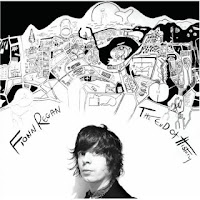
While the story of how an introverted English boy named Reginald Dwight transformed himself into a flamboyant Rock and Roll superstar named Elton John is nothing short of extraordinary, the manner in which the story is told through this documentary leaves the viewer ultimately dissatisfied. Because Elton John’s career is so extensive and prolific, this 98-minute biography only skims over the highlights (and the lowlights) without offering much context to or analysis of any details.
In addition to the documentary’s narration, a small assortment of journalists and biographers add commentary and a modicum of insight. As well, sparing clips of Elton John, most of them outdated and superfluous, are scattered throughout the film.
The narrative begins by chronicling the childhood of Reginald Dwight, a young boy living with his quarreling parents, who took to playing the piano by age four. Able to play by ear yet unable to read sheet music, he won a junior scholarship to the Royal Academy of Music by age eleven. While he learned to play and appreciate classical music, he was most inspired by Little Richard, Jerry Lee Lewis, and Fats Domino, musicians who effectively turned the piano into a Rock and Roll instrument.
Scanning over the intervening years, the film mentions Reginald Dwight’s first band, Bluesology, which released the single, “Come Back Baby,” only to see it promptly obliterated in the charts by the Rolling Stones “(I Can’t Get No) Satisfaction.” Bluesology subsequently dissolved without making any discernible dent on the British music scene.
After assuming a pseudonym and, ostensibly, a whole other identity, the newly named Elton John answered a magazine advertisement that called for songwriters. His compositional skills were paired up with the lyrical talent of Bernie Taupin and, together, their professional partnership took root.
At this point in the documentary, notable occurrences like album releases and hit singles flash by in rapid succession. Granted, this was an era that, for Elton John at least, yielded a torrent of output and creativity. Unfortunately, though, this film fails to adequately examine the significance of those occurrences. Rather, it merely presents them in a cursory overview, a timeline stretching from John’s 1969 solo debut, Empty Sky, right on through to 2006’s The Captain And The Kid.
In a nutshell, Elton John: Someone Like Me fails to measure up to its intent of presenting an authoritative biography of this music legend. The life story of Elton John, with all its splendor and despair, is certainly one worth exploring in depth. It’s unfortunate that this documentary does not approach it as such.



















